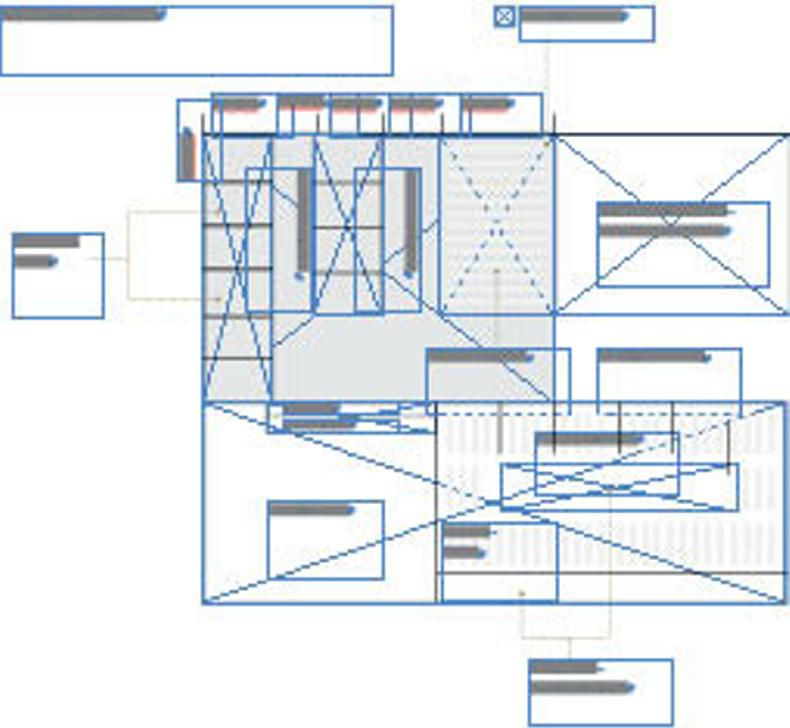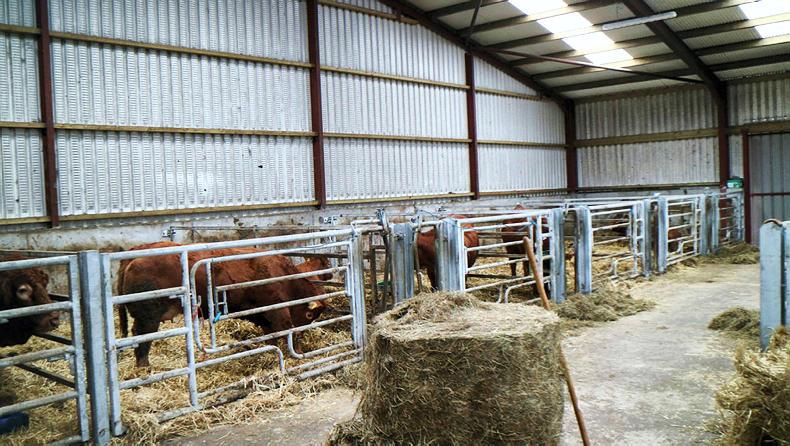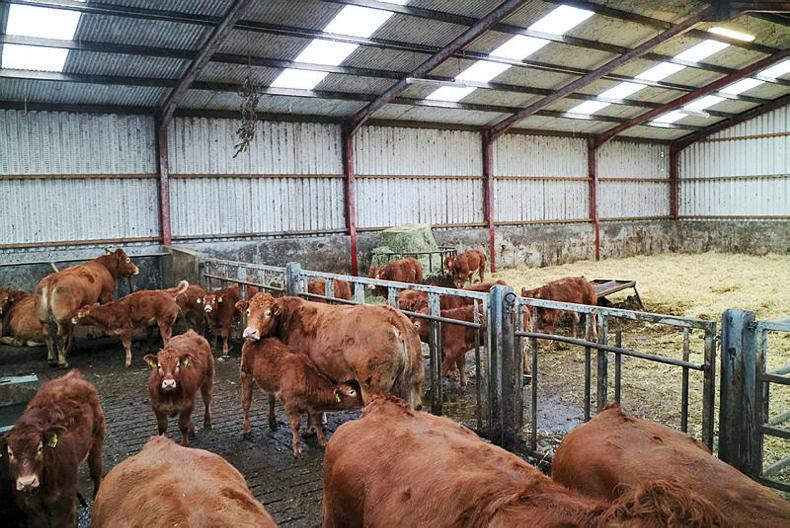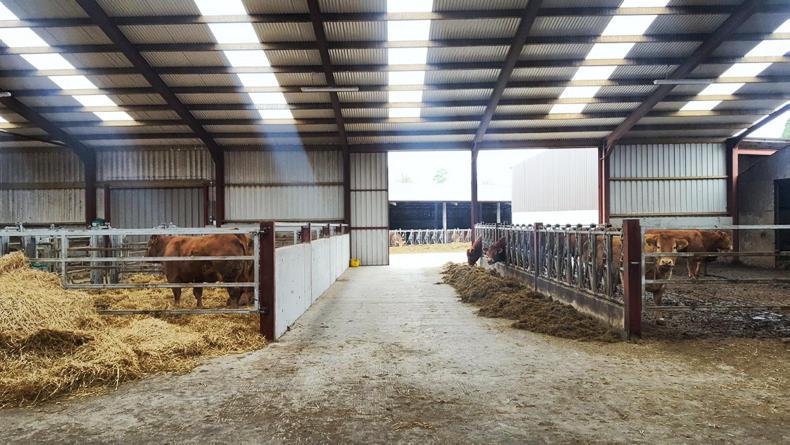The Irish Farmers Journal recently visited the Ampertaine herd run by William and James McKay in Maghera, Co Derry. The renowned herd is made up of 120 pedigree Limousin cows. The facilities on the McKay farm are top notch.
Last year James decided it was time to build a calving shed on to existing cubicle sheds. Before this, the McKays were calving 120 cows in just three pens. They felt the cows were not getting adequate bonding time in the individual calving pens with their freshly born calves before they had to be moved on again. Bonding time in individual pens was especially curtailed during busy calving times. The construction of the calving shed would help alleviate this issue. The McKays wanted it close to their dwelling house for ease of management during the calving period and to fit in with the existing farm layout.

Figure 1 shows the existing cubicle and animal accommodation combined with the new calving area. The new calving area was an extension on to the existing animal accommodation. The calving shed was built by Paddy Grant construction and it was completed in autumn 2015.
The new extension is six bays long by 75ft wide. As seen in Figure 1, the calving area includes a passageway which takes up the first three bays. The next bay is a feeding passage, the following two bays are a slatted area and a tank which lead into the existing accommodation.
There are 10 calving pens in the new calving area. Six are against the back wall and the remaining four are across from these as seen on the left of picture 1. Each calving pen is 17.5ft by 12.5ft. The calving pens are straw bedded and they are generally cleaned out every six weeks. All gates open back against the wall and a tractor with a front loader can scrape out the pens with ease.
Each calving pen shares a water trough and there is a calving gate in each pen. A cow has access to feed through the head bail of the calving gate. James likes to leave the cows after calving with their newborn calves for a week if possible.

This is an overview of the six bays of the calving area against the back wall. Between the first and second pen on the immediate left of the picture is a removable post. This post lifts up and the gates fold back to provide ease of access for the tractor and front loader when it comes to cleaning out the pens.

This is one of the McKays’ cow sheds. This shed is connected to the new calving shed. The total size of the shed is 10 bays (159ft) long by 64ft wide. The area of the tank is six bays (95.4ft) by 56ft wide and it is 8ft deep. When asked about the size of the slurry tank James, said: “We needed a tank this big because the other tank across from it has lower capacity and fills up very easily so I pump the slurry across a few times during the winter.”
There are 62 cubicles in total. This includes the cubicles in the middle which are suspended on pillars built inside the tank. There is an additional 8ft of cubicles which run alongside the back wall. There are four cubicles per bay. Each cubicle is 8ft long. On each cubicle the McKays have mattresses for cow comfort.
They went for this cubicle design and calf creep for two main reasons. They felt a fully straw-bedded shed would be too expensive and they already have some stock on straw bedding. In addition the McKays have quite a few cows calving in July and August. These calves are strong coming into the shed and this design was very suitable for their system. “There’s a good creep area at the end of it and if I decide in March or April to wean off the calves I just pull the gates across and the job is done” explained James. The McKays are very happy with the locking barriers and they use them continuously for artificially inseminating the cows.

The calf creep is four bays (63.6ft) long by 64ft wide. James decided on this large scale calf creep because when it comes to weaning his calves in the springtime they weigh around 300kg each. So 60 of these calves will require sufficient room as they grow. The shed is cleaned out once per year, however it is usually bedded twice per week but this depends on calf size. Similar to the calving pens, this creep area is cleaned out using a tractor and a front loader.
James only beds the first three bays of this creep. The other bay is left vacant otherwise the calves would drag the straw into the slats. James finds this shed exceptionally good when it comes to weaning time.
The creep gates (pictured below) are shut off to prohibit access but the animals can still smell one another.
There is a cattle crush and walkway in this creep area for routine cattle handling events.







 This is a subscriber-only article
This is a subscriber-only article











SHARING OPTIONS: